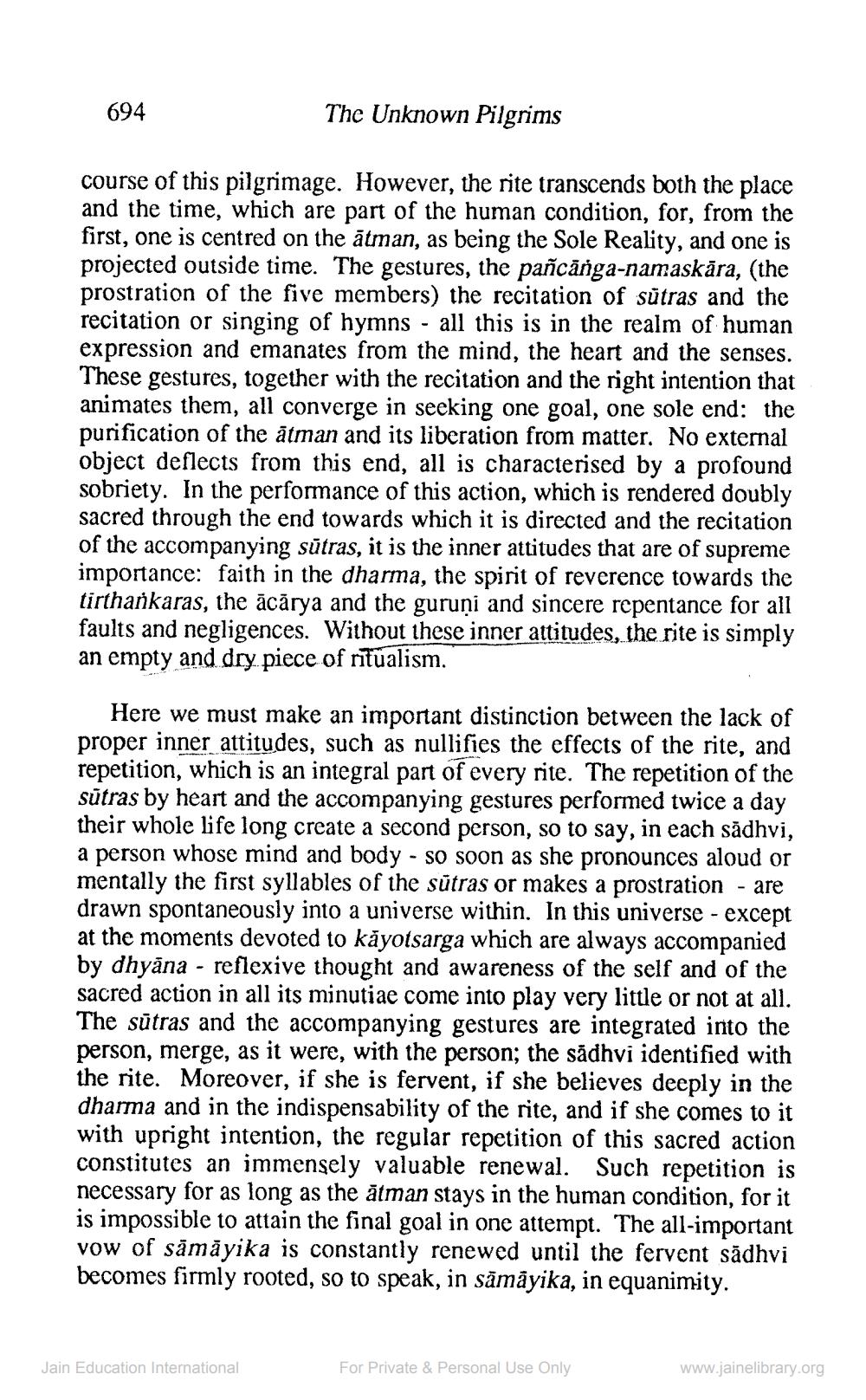________________
694
The Unknown Pilgrims
course of this pilgrimage. However, the rite transcends both the place and the time, which are part of the human condition, for, from the first, one is centred on the ātman, as being the Sole Reality, and one is projected outside time. The gestures, the pañcānga-namaskāra, (the prostration of the five members) the recitation of sutras and the recitation or singing of hymns - all this is in the realm of human expression and emanates from the mind, the heart and the senses. These gestures, together with the recitation and the right intention that animates them, all converge in seeking one goal, one sole end: the purification of the atman and its liberation from matter. No external object deflects from this end, all is characterised by a profound sobriety. In the performance of this action, which is rendered doubly sacred through the end towards which it is directed and the recitation of the accompanying sūtras, it is the inner attitudes that are of supreme importance: faith in the dharma, the spirit of reverence towards the tirthařkaras, the ācārya and the guruņi and sincere repentance for all faults and negligences. Without these inner attitudes, the rite is simply an empty and dry piece of ritualism.
Here we must make an important distinction between the lack of proper inner attitudes, such as nullifies the effects of the rite, and repetition, which is an integral part of every rite. The repetition of the sūtras by heart and the accompanying gestures performed twice a day their whole life long create a second person, so to say, in each sādhvi, a person whose mind and body - so soon as she pronounces aloud or mentally the first syllables of the sūtras or makes a prostration - are drawn spontaneously into a universe within. In this universe - except at the moments devoted to kåyotsarga which are always accompanied by dhyāna - reflexive thought and awareness of the self and of the sacred action in all its minutiae come into play very little or not at all. The sūtras and the accompanying gestures are integrated into the person, merge, as it were, with the person; the sădhvi identified with the rite. Moreover, if she is fervent, if she believes deeply in the dharma and in the indispensability of the rite, and if she comes to it with upright intention, the regular repetition of this sacred action constitutes an immensely valuable renewal. Such repetition is necessary for as long as the ātman stays in the human condition, for it is impossible to attain the final goal in one attempt. The all-important vow of sāmāyika is constantly renewed until the fervent sādhvi becomes firmly rooted, so to speak, in sāmāyika, in equanimity.
Jain Education International
For Private & Personal Use Only
www.jainelibrary.org




